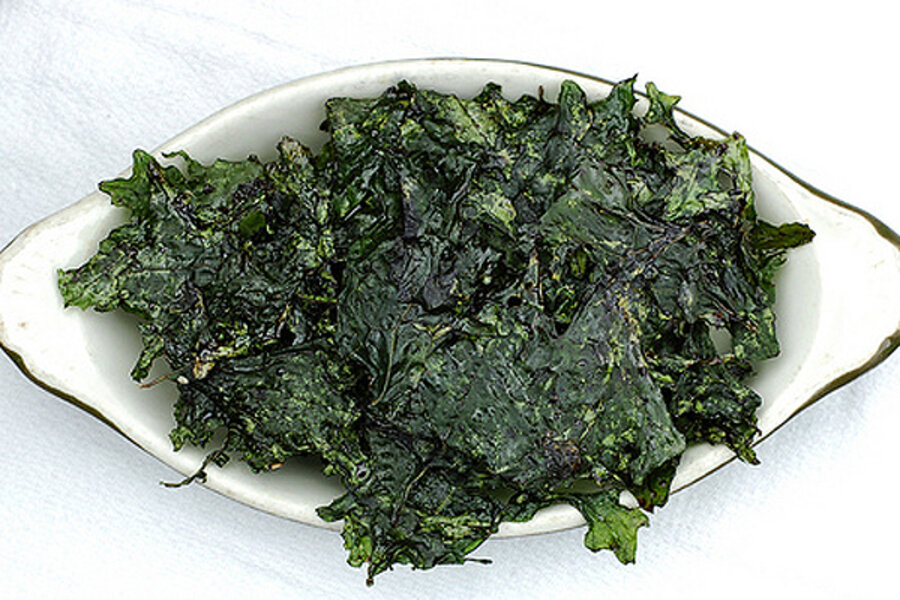By Eve Fox, Garden of Eating
Kale chips
Makes enough for 4 people to snack on happily
1 bunch of kale, washed and fully dried
Oil of your choice (1-2 tablespoons)
Seasonings of your choice
1. If you're using your oven, preheat it to 250 degrees F., (if your oven does not go down to 250, use whatever the lowest temperature it offers and check the chips earlier since they'll cook more quickly). If you're using a dehydrator, set it to 115 degrees F., or check the manual for your machine to see what setting it recommends for kale. Remove the leaves from the center rib of the kale and tear them into large pieces. Place leaves in a large bowl, drizzle with the oil, add the other seasonings and toss until the leaves are evenly coated.
2. If you're using your oven, divide the kale leaves between two heavy-duty baking sheets and arrange in a single layer – no need to grease the sheets or use parchment paper – the oil on the leaves should do the trick of keeping them from sticking quite nicely. If you're using a dehydrator, do the same thing with however many trays you need to arrange them in a single layer, probably between 2-4, depending on the size of the trays and the amount of kale you're working with.
3. If you're using your oven, bake for 15-25 minutes, or until crisp – the cooking time will depend somewhat on the thickness of the leaves and the size of the pieces. Start checking them at 10 minutes in and rotate the trays if they look to be cooking unevenly. You can eat them as soon as they're cool enough to grab. Feel free to adjust your seasonings after they're out of the oven, too. If you're using a dehydrator, let them go until you're happy with the texture – depending on the type of kale, the wetness of the seasonings you're using and the level of crispness you like, this can take anywhere from 2-4 hours or potentially even longer – it's up to you!
See the full post on Stir It Up!








